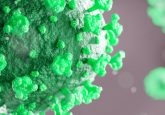Editor’s Picks | January 2023
On this month’s episode of Editor’s Picks, we’re celebrating the 40th birthday of PCR, saving the northern white rhinoceros from the brink of extinction and connecting the dots between HPV, the vaginal microbiome and race.
Articles featured in this month’s episode include:
- PCR: celebrating 40 years of development
- Northern white rhinoceros could be brought back from the brink of extinction
- Communication is key for dolphins completing cooperative tasks
- A vaccine can kill and prevent brain cancer using an unusual approach
- The role of amyloid in dementia and brain aging
- Connecting the dots between HPV, the vaginal microbiome and race
- Talking Techniques | Welcome to the jungle: sequencing for conservation
- Talking Techniques | Neuropixels: Big data heaven or burying the lead in averages?
Let us know which articles you enjoyed this month by tweeting us @MyBioTechniques using #BTNEditorsPicks
[00:00 – 00:34] Hello! As another month rolls over and we turn over the pages of our calendars, it’s time to catch up on the latest news from BioTechniques with our “Editor’s Picks” podcast.
Join me, Aisha Al-Janabi, as I round up the weird, the wonderful and the incredible research going on in the life science community. I’ll be bringing you my favourite news stories and interviews in this bitesize podcast to accompany you whilst you’re waiting for your centrifuge to run or your kettle to boil.
[00:34 – 00:57] To celebrate the 40th birthday of PCR, our Assistant Editor, Beatrice Bowlby ,has looked through the history books and compiled some of the key developments in PCR that have emerged since it first came onto the scene. In this feature, read about the invention of PCR in 1983 and how it continued to advance in the following decades.
[00:57 – 01:33] The last two surviving northern white rhinoceroses consist of a mother and a daughter, and in a bid to bring them back from the brink of extinction, researchers are trying to create lab-grown egg and sperm cells. The BioRescue research team recently published a breakthrough as they successfully turned stem cells into primordial germ cells, which is an initial step towards producing gametes in culture. The researchers explained this is the first time that primordial germ cells of a large, endangered species have been generated from stem cells. They will now focus on turning these stem cells into egg cells, which, who knows, maybe eventually lead to a whole, living rhinoceros in the future!
[01:33 – 02:28] Human-made noises disrupt dolphins’ ability to communicate with each other and perform cooperative tasks, which could be impacting the ability of wild dolphins to hunt, reproduce and communicate. Researchers from the University of Bristol and the Dolphin Research Center have shown that dolphins in captivity are affected by artificial high-volume noises. The researchers tasked two dolphins, called Delta and Reese, with pressing their own buttons placed at opposite ends of the pool, within 1 second of each other after being released from the same starting point. As the artificial underwater noises increased and intensified, they found that Delta and Reese changed the length of their vocalizations and changed their body language so they would face each other. They completed the task at a lower success rate when the pool noise was at its highest. The study’s authors hope their results are sufficient for highlighting how noise affects wild animals’ ability to cooperate effectively.
[02:28 – 03:07] Researchers have developed a cell therapy that eliminates established tumors and induces long-term immunity, which showed promising results in a mouse model study of brain cancer glioblastoma. This vaccine utilizes genetically engineered living tumor cells and takes advantage of their ability to track and target other tumor cells. Using CRISPR-Cas9, the living tumor cells were edited to release a tumor-killing agent and designed to express factors to make it easy for the immune system to recognize these cells. These engineered therapeutic tumor cells successfully eliminated brain tumor glioblastomas in mouse models and induced long-term immunity.
[03:07 – 03:56] A new study sheds light on the differences between the amyloid beta protein in aging brains and the brains of those with Alzheimer’s. Researchers have found that the presence and amount of amyloid beta protein in the brain cannot be used as the only indicator of Alzheimer’s disease. Instead, it is the solubility of amyloid beta protein that is more important to dementia development. The research group used positron emission tomography to image the brains of individuals with Alzheimer’s and aging brains to monitor the increase, processing and removal of amyloid beta over time. This revealed that similar levels of the protein are present in aging brains and those with Alzheimer’s; however, the Alzheimer’s brain contained higher amounts of the insoluble form of amyloid beta. The current study highlights that more research is necessary to understand how the brain clears amyloid beta and other proteins.
[03:56 – 04:37] The vaginal microbiome is a dynamic ecosystem that is constantly changing and is influenced by various factors including menstrual cycle, sex and diet; but, how do lived experiences, such as racism, impact the vaginal microbiome. We spoke to Kathy Tossas, an assistant professor at the Virginia Commonwealth University School of Medicine, whose research aims to answer this question. To better understand the impact the difference in vaginal microbiomes has on HPV-related oncogenesis, Kathy looked at samples from a diverse group of women to generate a robust data set to analyze. You can find a link to the full feature, written by our Digital Editor Annie Coulson, in the show notes of this podcast.
[04:37 – 04:55] Those are some of the articles from BioTechniques that I enjoyed reading or writing over the past month, but there are plenty more on our website. If you want to listen to more podcasts about all thing’s life science, check out Talking Techniques created by the BioTechniques team.
[04:55 – 05:13] In a recent episode of Talking Techniques, titled Welcome to the jungle: sequencing for conservation, we heard from Zane Libke, a field researcher based in Ecuador. He discusses his current work using nanopore sequencing to find undescribed species, how it can influence conservation efforts and fighting biodiversity loss in a more local-centric way.
[05:13 – 05:33] Whilst at Neuroscience 2022, our Senior Editor Tristan Free spoke to Tim Harris, who is the creator of a neural recording probe called Neuropixels. In this episode, Tim shares the story of his creation and details how they have changed the data collection landscape in neuroscience.
[05:33 – 05:57] Let us know what your favourite articles were this month by tweeting us at My BioTechniques and use the hashtag BTN Editors Picks. If you’d like to find out more about any of these articles check out the show notes of this episode.
Thank you for listening, until next time, bye!





